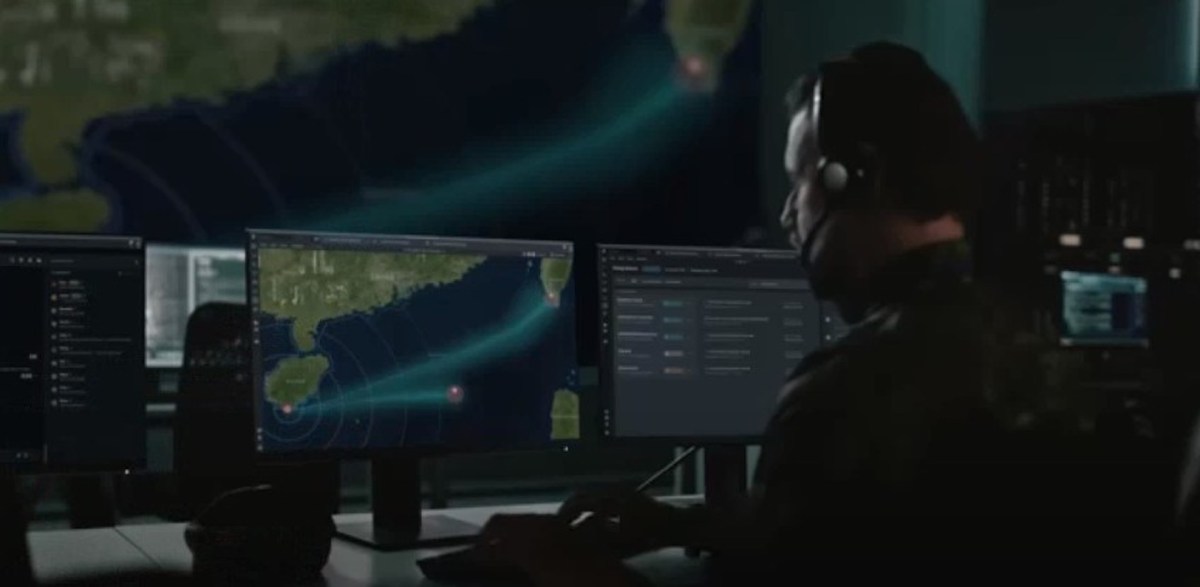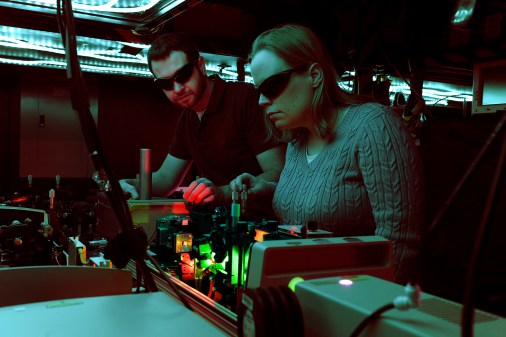Navy CTO unveils list of priority areas for tech investment

The Navy released a new memo issued by its chief technology officer outlining priority areas for future investment by the sea services as they pursue modernization.
The document, dated June 17 and signed by acting CTO Justin Fanelli, noted the need to “accelerate the adoption of game changing commercial technology.”
The list of priorities “can help shape resource allocation decisions across the enterprise,” he wrote, adding that it should serve as a “signaling tool” to industry partners and private capital to inform how they allocate their resources and focus their efforts.
Artificial intelligence and autonomy top the list of “Level 1” technologies in the hierarchy.
“AI and autonomy play a vital role in information warfare by enabling decision advantage and enhancing the ability of human-machine teaming. The DON seeks AI-driven solutions for real-time data analysis and automated decision-making to enhance operational effectiveness,” Fanelli wrote.
Level 2 technologies under this category include capabilities like applied machine learning and natural language processing; model verification and AI risk governance; mission platforms and human-machine interfaces; and edge AI infrastructure and DevSecOps pipelines.
Next on the list is quantum tech, which Fanelli said will transform secure communications, computing and sensing for information warfare. He noted that quantum encryption could protect the department’s networks from adversaries, and quantum computing would boost data processing and cryptographic resilience.
Level 2 technologies in this area include tools such as post-quantum cryptography and quantum-enhanced communication; hybrid quantum-classical architectures; quantum gravimetry and inertial navigation; and “quantum interconnects and cryogenic systems.”
“Transport and connectivity” are third on the list. According to Fanelli’s memo, the Navy is prioritizing advanced networking, secure communications, 5G and FutureG tech to enable real-time data sharing and command and control.
Level 2 technologies under this category include things like 5G and FutureG nodes and mesh architectures; dynamic spectrum sharing and anti-jamming techniques; datalinks and “ship-to-X” mesh networks; and cloudlets and intelligent routing.
Fourth on the list is command, control, communications, computers, cyber, intelligence, surveillance and reconnaissance — also known as C5ISR — as well as counter-C5ISR and space capabilities.
“The DON seeks to integrate advanced sensor networks, improve automated data fusion, and develop resilient space-based architectures to support real-time intelligence gathering,” Fanelli wrote.
Level 2 technologies in this area include capabilities such as multi-INT engines and automated targeting; operational pictures and targeting algorithms; hybrid constellations and positioning, navigation and timing (PNT) from space; and open architectures and multi-coalition information sharing.
Fifth on the list is tech related to cyberspace operations and zero trust.
“Cyber threats are evolving rapidly, making Zero Trust Architecture essential for securing DON information networks. Priorities include advanced cyber defense frameworks, threat intelligence automation, and proactive security measures to counter adversarial cyber operations,” per the memo.
Level 2 capabilities under this category include things like identity and access management — such as attribute-based access control and federated identity systems — micro segmentation and risk-adaptive controls for zero trust, cyber threat hunting and deception, and operational technology (OT) security — such as industrial control system and supervisory control and data acquisition (SCADA) protection and remote access.
The complete list of tech priorities for Levels 1, 2 and 3 can be found here.
“A lot of these areas are mainly being driven by commercial tech,” Deputy CTO Michael Frank said in an interview. “It’s going to be a mix of … traditional defense vendors, traditional primes. But you know, we are really focused on getting some new entrants in, right? So, expanding the defense industrial base, getting some new players on the field. And this is a signal to them. This memo is meant to be a signal to them and what we’re focused on, what our priorities areas are, so they can better make decisions … If you’re an entrepreneur in this area or if you’re a VC who’s looking to invest, you know these are the general areas that we’re looking at.”
The Navy is looking to cast a wide net for new capabilities.
“We’re going to be looking at emerging tech from anybody and everyone who is operating in these areas and developing things in these areas, to include the other players in the defense innovation ecosystem. So, you know, looking at what DIU is doing, partnering with In-Q-Tel and what they are doing, because we want to make sure that we have awareness of all the various efforts across government to reduce waste, to reduce redundant spend, reduce redundant efforts, given the fact that we are operating in a resource-constrained environment, both with money and with people and time and effort and all of that,” Frank said.
The CTO’s office is aiming to accelerate the transition of key capabilities to the Navy and Marine Corps.
“We are absolutely more interested in higher [technology readiness levels],” Frank said. “We are more focused on things that we can start testing, validating and transitioning to the warfighter now.”
The list of priority technology areas is meant to be updated over time, he noted.
“This is a living list, it’s an evolving list. You know these technology areas are not going to be static. I mean, Level 1 will probably not change for a while, but the Level 2 and Level 3 … will and should be regularly updated in order for it to be useful to industry partners,” Frank said.






